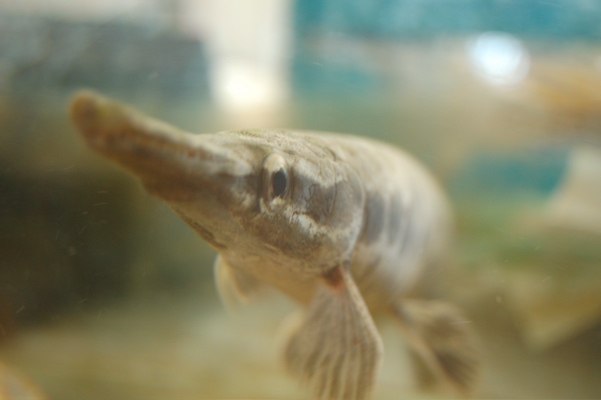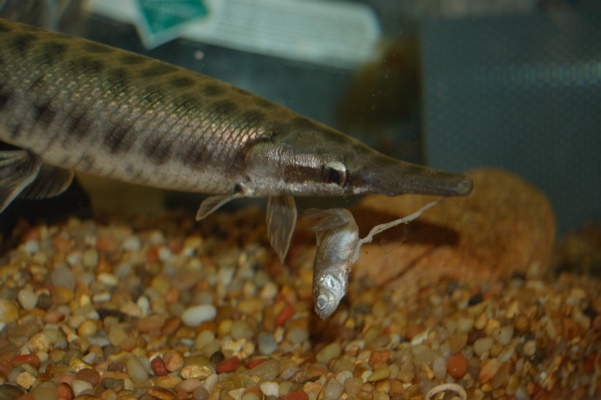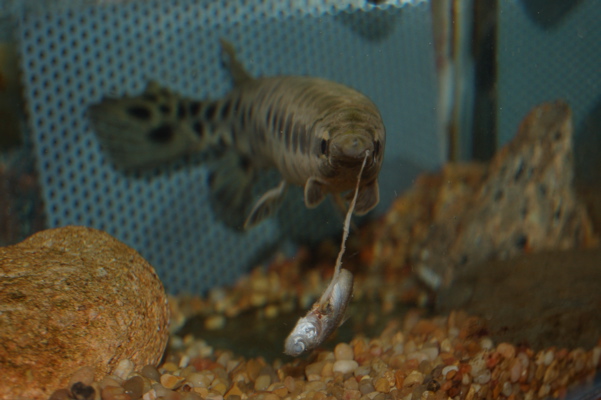After 137 days with Monterey Bay Aquarium, the juvenile male white shark was released this morning. I feel lucky to have been able to see this one up close for the past month and to learn so much about it.
Here are some interesting bits of information:
The male shark was originally caught by MBA's white shark experts, by line and hook, just off of the coast of Malibu, California.
It's age is estimated at just over a year old.
This white shark was 5-feet, 8-inches, and weighed 104 pounds when he was first put on exhibit. Upon his release he had grown to 6-feet, 5-inches long and weighed 171 lbs.
This is the second white shark ever successfully kept on exhibit anywhere in the world. By "successful", I mean that the shark was able to safely navigate the exhibit he was placed in (the Outer Bay Exhibit) and took food. Monterey Bay Aquarium has been the only aquarium so far to do these things.
The female white shark was with the aquarium for 198 days and reached 6-foot, 4-inches with a weight of 162 pounds. During her time on exhibit, she grew 1 foot, 4 inches in length, and put on 100 pounds!
The male shark was released just off of Point Pinos, and was tagged with a 90 day PAT tag.
This shark never attacked any of his exhibit mates, instead feeding on plenty of wild-caught salmon steaks which were personally delivered to him on the end of a pole (the salmon was tied to the pole with an easily digestible cotton string, in order to prevent the voracious tunas from nabbing it).
During his stay, the white shark generally cruised towards the top of the exhibit with his dorsal fin occasionally breaking the surface of the water.
Flashes from people taking pictures seemed to cause the white shark to spend less time towards the front of the glass, and more time in the back of the exhibit where he was a little harder to spot.
It was amazing to see how many people's perceptions of sharks as malevolent, murderous monster were changed by simply watching him calmly cruising around the exhibit.
"Why isn't he attacking the other fish?" is a question often heard in the Outer Bay Exhibit. When people find out that these creatures don't kill everything in the oceans, and in fact help to keep the wildlife populations healthy, they want to learn more and generally start to develop an interest much different from the morbid, sensationalized portrayals that they are used to seeing on TV and in the movies.
A lot of people seem truly surprised to learn that most white shark attacks on humans are accidental. A human with four limbs sticking off of a surfboard looks like the silhouette of a sea lion or a seal from below. Upon tasting human, most white sharks don't seem to come back to for seconds. It's kind of like biting into what you think is a caramel flavored chocolate, and finding out that it is in fact the chocolate covered fruit and nut loaf.
Isn't it cool that the aquarium keeps its animals' welfare first and foremost in mind, when considering whether or not to keep them on exhibit or to release them. From what I've seen at aquariums around the world, this is not always the case.


